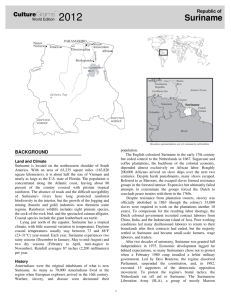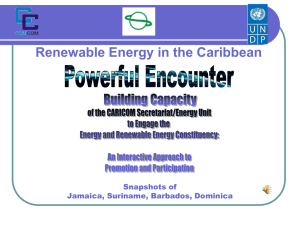FACT SHEET REPUBLIC OF SURINAME
advertisement
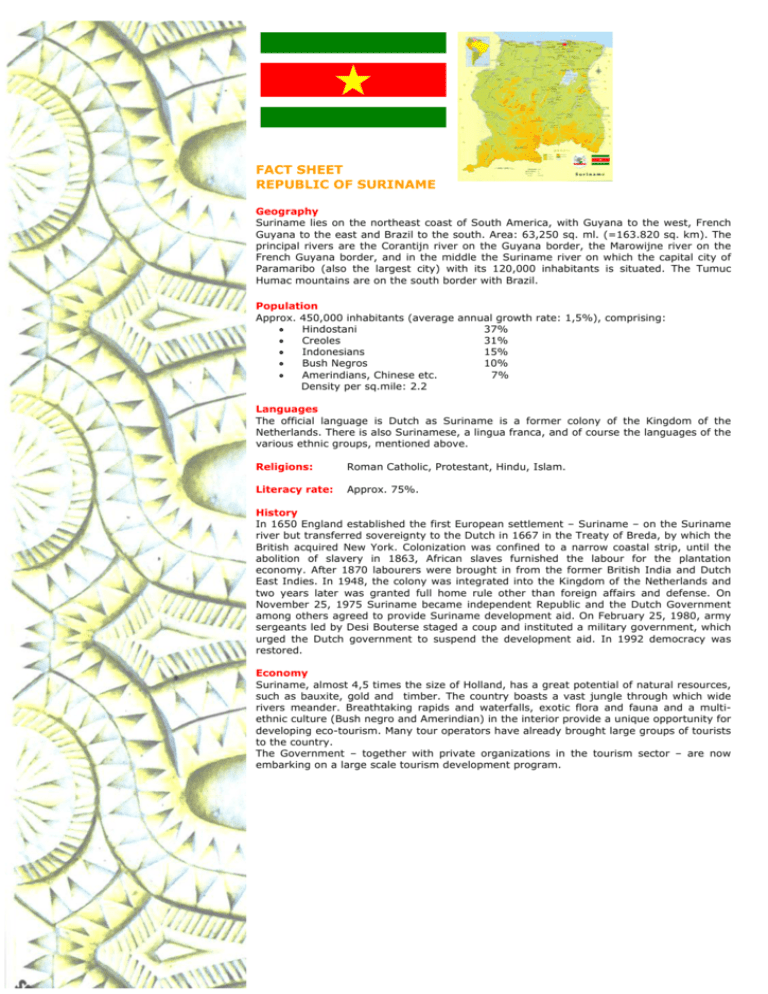
FACT SHEET REPUBLIC OF SURINAME Geography Suriname lies on the northeast coast of South America, with Guyana to the west, French Guyana to the east and Brazil to the south. Area: 63,250 sq. ml. (=163.820 sq. km). The principal rivers are the Corantijn river on the Guyana border, the Marowijne river on the French Guyana border, and in the middle the Suriname river on which the capital city of Paramaribo (also the largest city) with its 120,000 inhabitants is situated. The Tumuc Humac mountains are on the south border with Brazil. Population Approx. 450,000 inhabitants (average annual growth rate: 1,5%), comprising: • Hindostani 37% • Creoles 31% • Indonesians 15% • Bush Negros 10% • Amerindians, Chinese etc. 7% Density per sq.mile: 2.2 Languages The official language is Dutch as Suriname is a former colony of the Kingdom of the Netherlands. There is also Surinamese, a lingua franca, and of course the languages of the various ethnic groups, mentioned above. Religions: Roman Catholic, Protestant, Hindu, Islam. Literacy rate: Approx. 75%. History In 1650 England established the first European settlement – Suriname – on the Suriname river but transferred sovereignty to the Dutch in 1667 in the Treaty of Breda, by which the British acquired New York. Colonization was confined to a narrow coastal strip, until the abolition of slavery in 1863, African slaves furnished the labour for the plantation economy. After 1870 labourers were brought in from the former British India and Dutch East Indies. In 1948, the colony was integrated into the Kingdom of the Netherlands and two years later was granted full home rule other than foreign affairs and defense. On November 25, 1975 Suriname became independent Republic and the Dutch Government among others agreed to provide Suriname development aid. On February 25, 1980, army sergeants led by Desi Bouterse staged a coup and instituted a military government, which urged the Dutch government to suspend the development aid. In 1992 democracy was restored. Economy Suriname, almost 4,5 times the size of Holland, has a great potential of natural resources, such as bauxite, gold and timber. The country boasts a vast jungle through which wide rivers meander. Breathtaking rapids and waterfalls, exotic flora and fauna and a multiethnic culture (Bush negro and Amerindian) in the interior provide a unique opportunity for developing eco-tourism. Many tour operators have already brought large groups of tourists to the country. The Government – together with private organizations in the tourism sector – are now embarking on a large scale tourism development program. Airport : Johan Adolf Pengel International airport. 45 minutes away from the capital Paramaribo. Entry requirements : Passports should be valid at least six months from the date of entry. Visitors from most countries other than the Caribbean Community need visas. Apply for a two-month, multiple-entry-traveler visa, which costs as much as the usual two months, valid-tourist-visa. Costs vary as per country of residence. Suriname Consulate : 7235 NW 19th Phone#: Fax# : Email : Suriname Embassy : Van Ness Center, Suite 108, 4301 Connecticut Ave, NW Washington, DC 20008 Phone#: 202 244 7488 Banks : De Surinaamsche Bank / RBTT (former ABN – AMRO) / Hakrinbank / Volkscredietbank / Landbouwbank Banking hours : Monday till Friday from 7.30 a.m. – 14.30 p.m. Public Holidays : January 01 – New Year’s Day March/April from Good Friday – Easter Monday May 01 – Labour day July 01 – Emancipation Day (End of Slavery) November 25 – Independence Day December 25 & 26 – Christmas Days Phagwa - variable Id Ul Fitre - variable St. Suite A, Miami, Florida 33126 305 593 2166 305 599 1034 surcgmia@bellsouth.net At the end of the year activities are conducted by Surifesta. A big street party is held in front of the Torarica Hotel. Time : Suriname time is two hours later than Eastern Standard Time (EST) in the USA and three hours earlier than Greenwich Mean Time (GMT) in Europe. Language : Official language is Dutch, taught in schools and used by government employees and media. All Surinamese also speak Sranantongo, the local lingua franca. English is widely spoken. Population : 450.000 inhabitants, 90% live in the coastal region Money : The Surinamese guilder floats against the US Dollar and other hard currencies: exchange rates are published in the daily newspapers. As of April 2005 the official Central Bank exchange rate is: US$ 1 : 2.75 SRD. Credit cards (American Express, Master card, Diners Club) are only used in banks and the larger hotels. Cash can be exchanged at local banks and Government – sanctioned cambios. Only the RBTT banks has ATM machines available for international credit cards. As of January 2004 the Surinamese guilder has been converted to the Surinamese Dollar (SRD). SRG 1,000 is now SRD 1,-
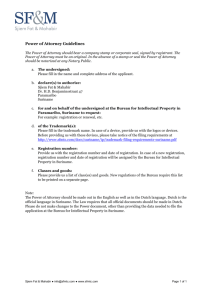
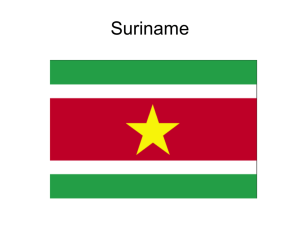
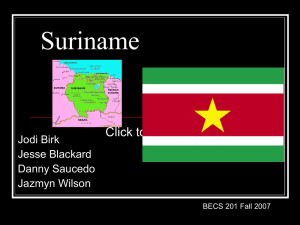
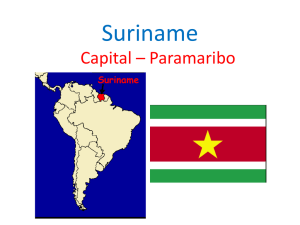
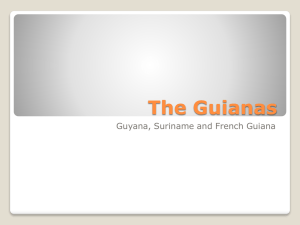

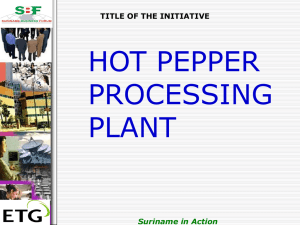
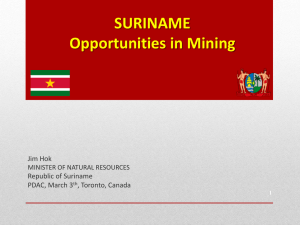
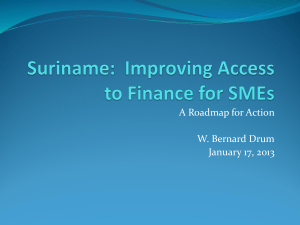
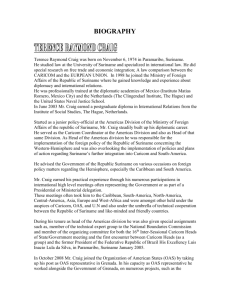
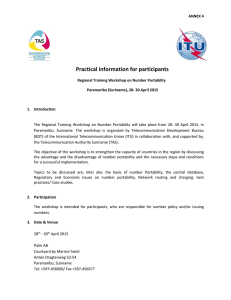
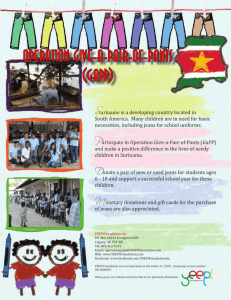
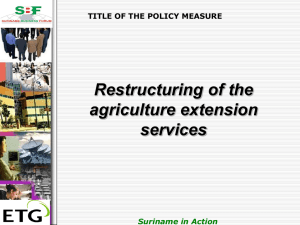
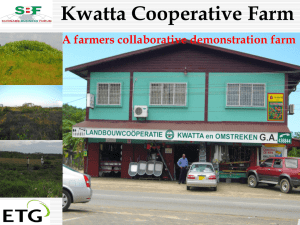
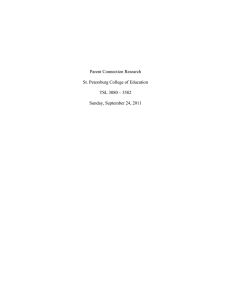
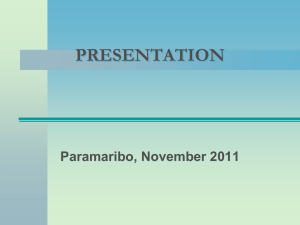
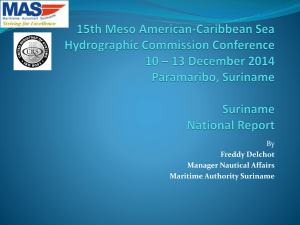
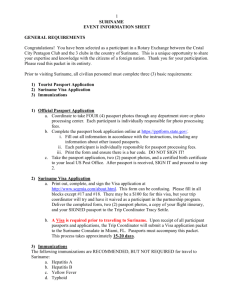
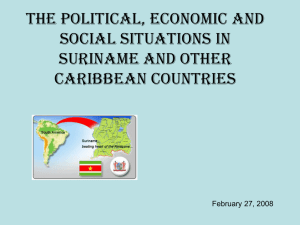
![1 SURINAME Image 1: Flag [1] Image 2: Map [2] Image 3: Map [2] 1](http://s3.studylib.net/store/data/008972129_1-cb90188ad1af8b64ebc379d507810260-300x300.png)
